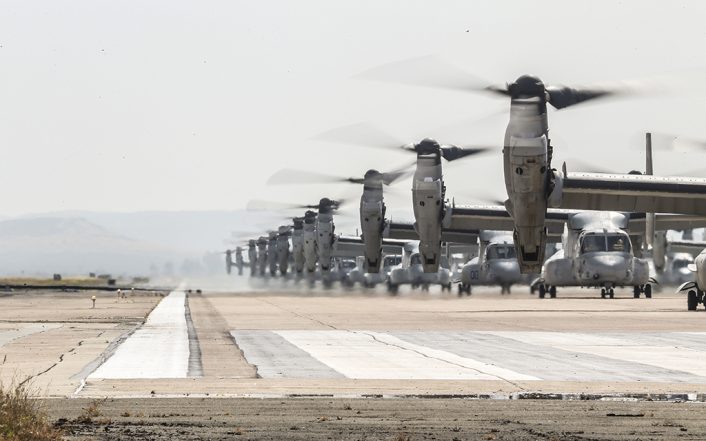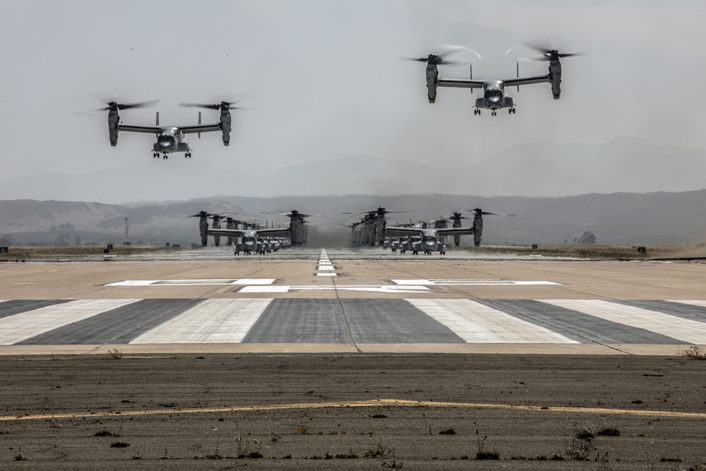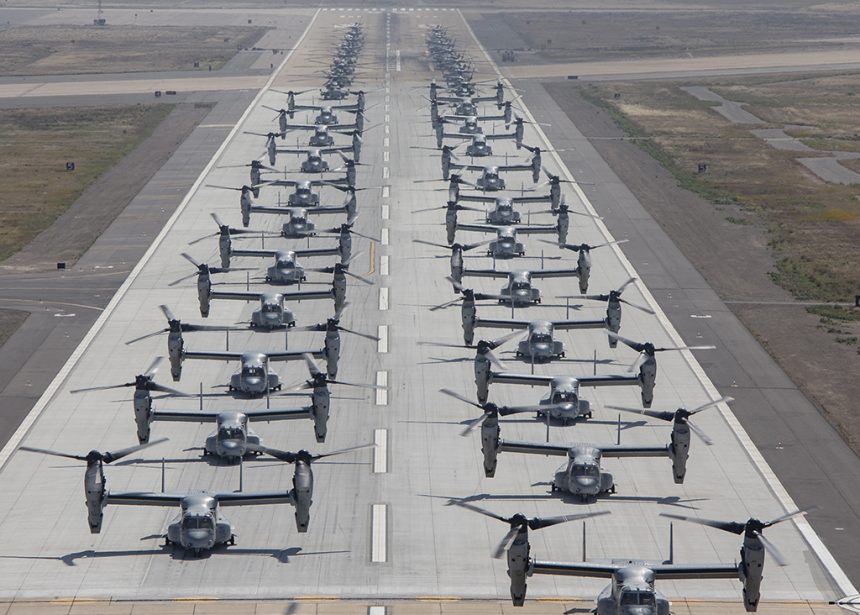41 helicopters formed up across the runway at Marine Corps Air Station Miramar for a massive readiness exercise that celebrated also the 75th anniversary of D-Day.
We have reported about several “Elephant Walk” exercises in the last few months, the most recent of those is the one involving 20 F-35B at MCAS Beaufort last month. However, what happened early in the morning on June 6, 2019 beat most of the previous ones: seven squadrons with Marine Aircraft Group (MAG) 16, 3rd Marine Aircraft Wing (MAW) conducted a massive training evolution during which 26 MV-22B Ospreys and 14 CH-53E Super Stallions (actually those figures are not confirmed as another USMC statement says 27 and 16…) took part in a combat readiness exercise that saw them depart and soared over Southern California.
Update: “Marine Aircraft Group 16 flew 26 MV-22 Ospreys and 15 CH-53 Super Stallions” said 1st Lt. Zachary H. Bodner, a 3rd MAW spokesman.
“MAG-16 has executed our maximum flight event to demonstrate the combat readiness of our MAG and to tell the MAG-16 story” said Col. Craig C. LeFlore, commanding officer of MAG-16, in a public release. “We want to test ourselves. If there is a crisis somewhere in the world, our job is to be ready to respond to that crisis at a moment’s notice.
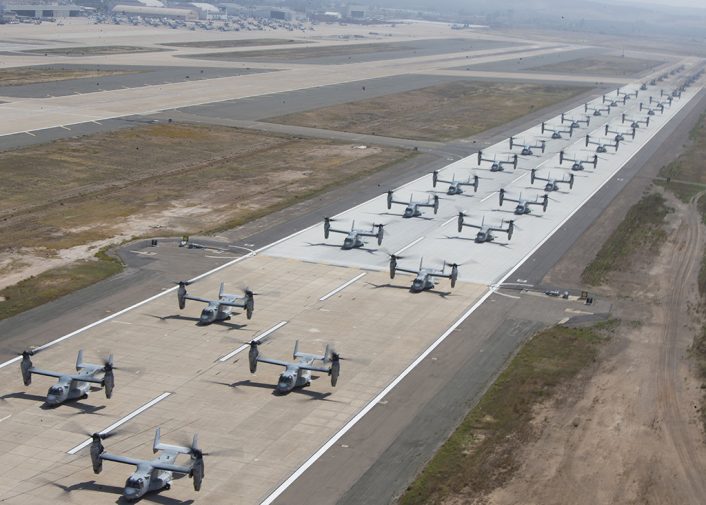
The mass launch was not carried out for show: the majority of the aircraft taking part in the Elephant Walk took also part in tactical training after launch.
“I can’t think of a better way for the MAG to celebrate the 75th Anniversary of D-Day and the accomplishments of those who have gone before us,” LeFlore continued.
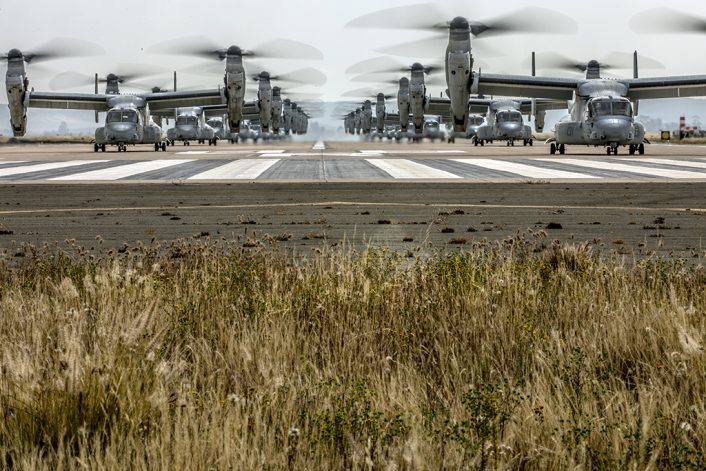
“MAG-16 provides the Marine Air-Ground Task Force (MAGTF) commander with the assault support transportation of combat troops, supplies and equipment, day or night under all weather conditions during expeditionary, joint or combined operations,” LeFlore explained.
Here are some interesting details about MAGTF and MAG-16 included in the news released by the U.S. Marine Corps:
A critical function of Marine Aviation, Assault Support enhances the MAGTF’s ability to concentrate strength against the enemy, focus and sustain combat power, and take full advantage of fleeting opportunities. Such functions are not new, however, as MAG-16 has demonstrated those abilities in combat operations in Iraq and Syria, as well as in humanitarian missions around the world.
The MV-22B Osprey and CH-53E Super Stallion are the two platforms that comprise MAG-16. The MV-22B Osprey was first procured in 1999 and has been a cornerstone of the MAGTF ever since. What makes this aircraft unique is its ability to combine the vertical flight capabilities of helicopters with the speed, range and endurance of fixed-wing transports. Weighing 35,000 pounds, the Osprey is capable of carrying more than 20 Marines more than 400 nautical miles at a cruise speed of 266 knots. The superb capabilities of the MV-22 translate into a faster MAGTF response in times of crisis. Those capabilities are put into practice around the world every day by MAG-16. Marine Medium Tiltrotor Squadron (VMM) 163, a squadron from MAG-16, is currently deployed in support of the 11th Marine Expeditionary Unit.
The other aircraft in MAG-16’s arsenal is the CH-53E Super Stallion. The Super Stallion is the only heavy lift helicopter in the DoD rotorcraft inventory. Weighing 37,500 pounds, the Super Stallion can carry more than 30 Marines or over 32,000 pounds of cargo more than 110 nautical miles. The heavy lift capabilities of the Super Stallion are crucial to supporting the six different types of assault support operations ranging from combat assault support to air evacuation. The combined capabilities of these two aircraft have enabled MAG-16 to assist with humanitarian aid and disaster response efforts such as typhoons, earthquakes and California fire suppression. To be successful during such operations, it is vital that the Marines and Sailors of MAG-16 operate their aircraft and train their crews on a regular and sustainable basis.
Enjoy these cool shots.
